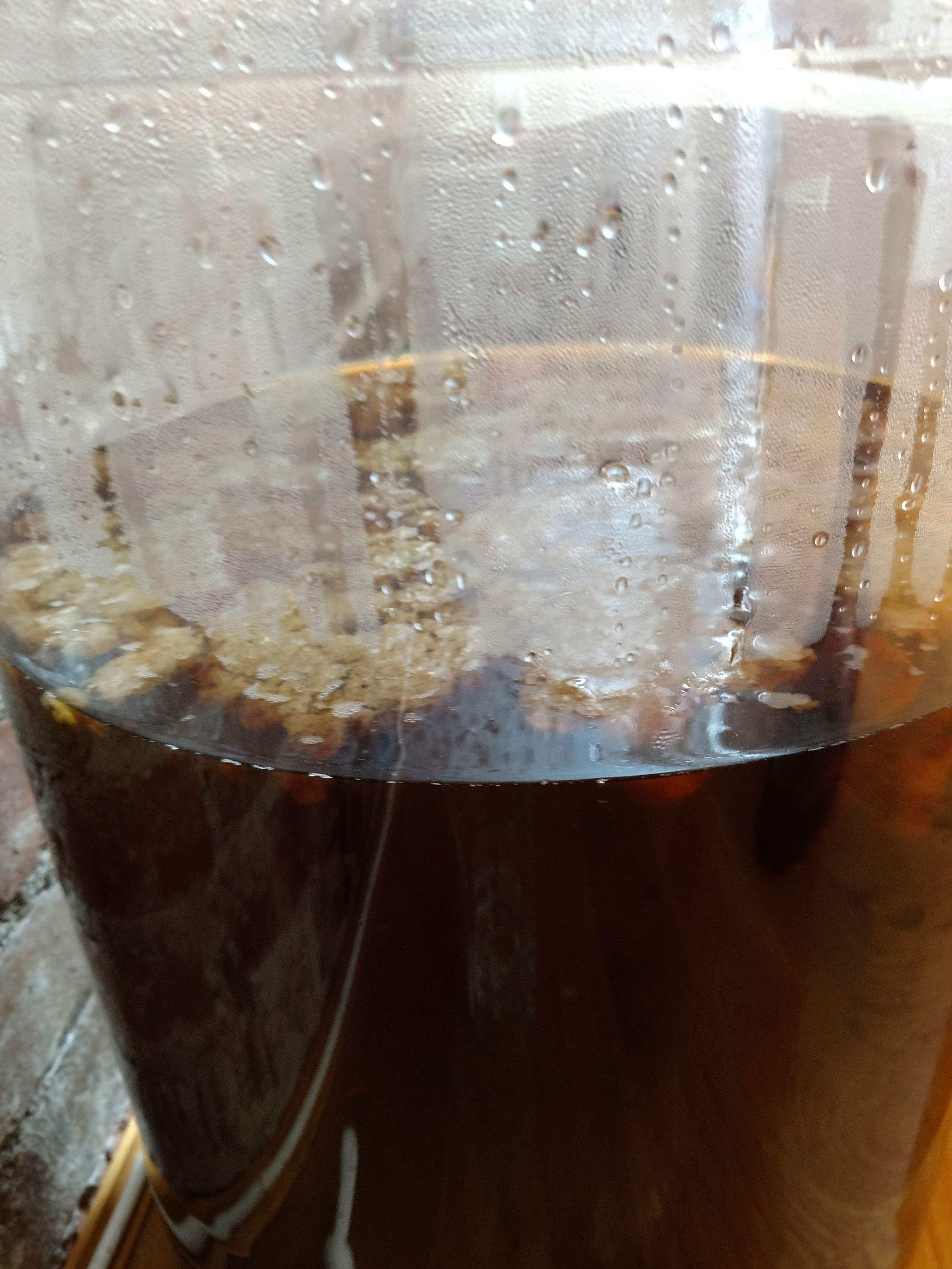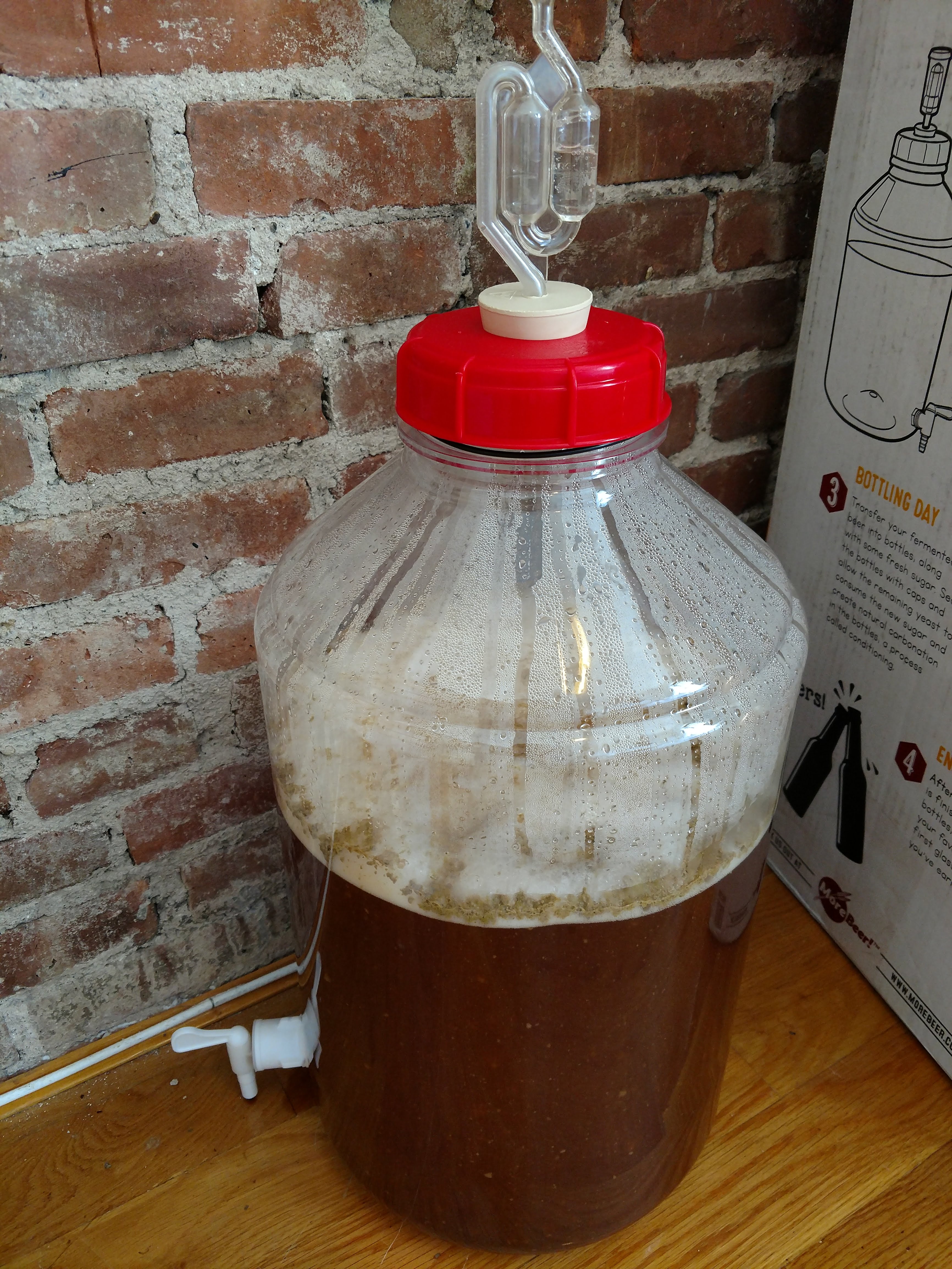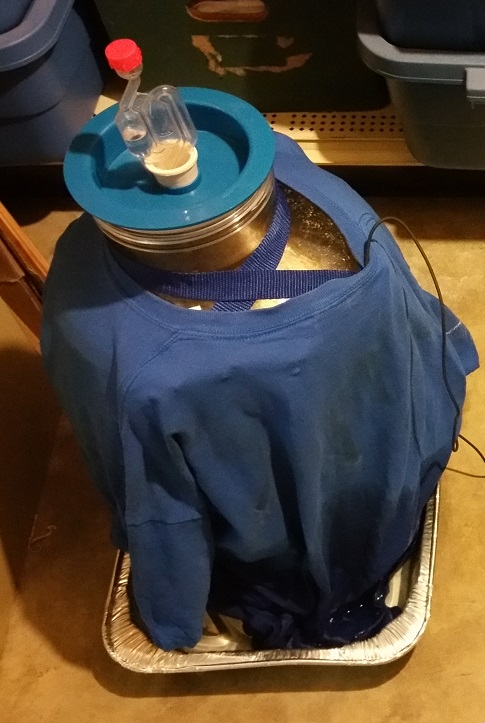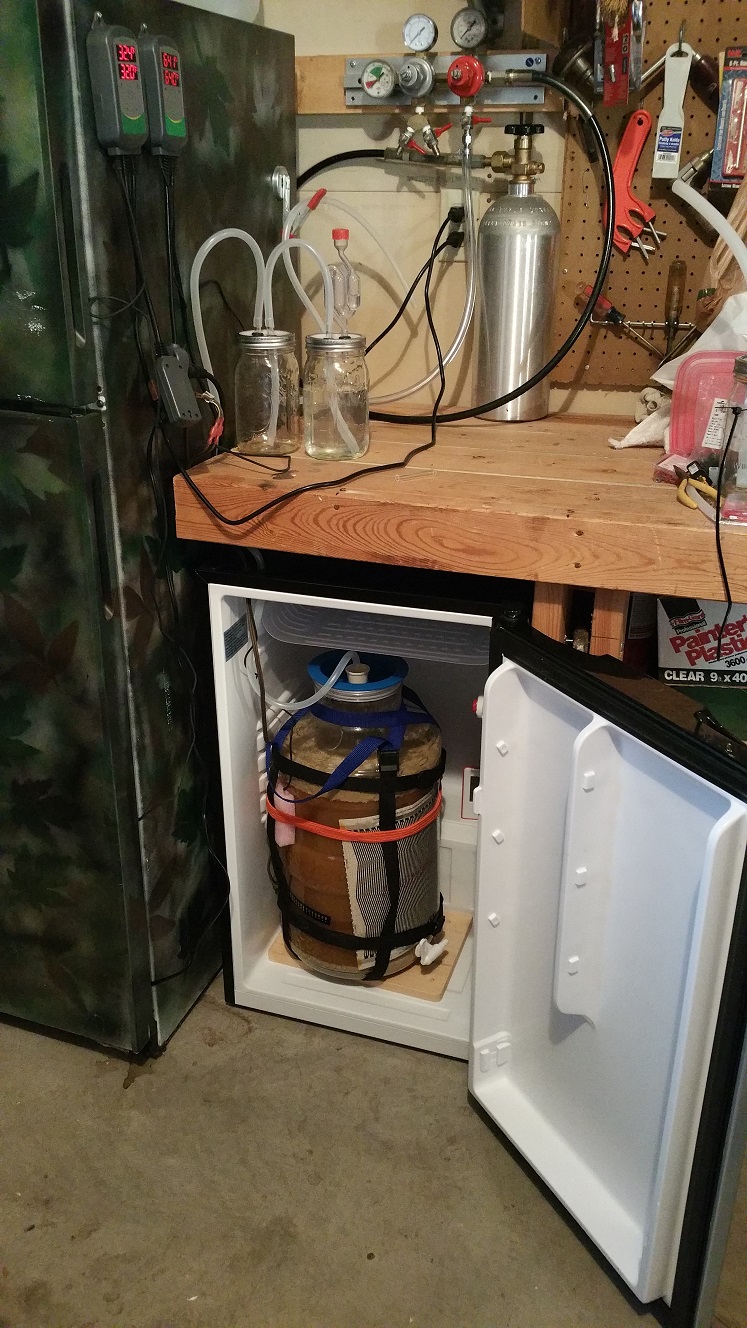Thank you everyone for your advice! Since I woke up this morning, the airlock has been bubbling constantly. There is a nice layer of foam on the top. Looks like at least some of the yeast survived. I was also super anal about sanitation, having read beforehand about the lengths you have to go to, so I have my fingers crossed it all works out.
Couple of follow questions:
1. Is it worth adding in more yeast, if I can? (Unfortunately I do not live within a homebrew store so may be infeasible, but just so I know.) If I killed off some of the yeast but some survived, how will this affect my final brew? Will it be less alcoholic? Don't the yeast reproduce anyway?
2. OG was 43. The recipe said it should be within 45 to 50. What does this mean about my brew?
3. I was trying to make an American Pale Ale. The color is clearly too dark. Is the color going to lighten up over the course of the fermentation process, or is this it? What did I mess up in the brewing that made it so dark? Could this be from steeping the grains for too long?
4. Two of my hops bags opened midbrew (did not realize until after I drained). Therefore there is a LOT of trub in the fermenter. Can I scoop this out at some point? Or will this end up in my final beer?
View attachment 586488
Given that you have some activity and a layer of foam you are probably OK. Since you used dry yeast and possibly caught your mistake before it had a chance to fully re-hydrate you probably have enough yeast cells to do the job. If it is going to take more than a couple days to get an additional yeast pack I would probably let it ride as you probably won't be able to change anything caused by under-pitching. You could end up with off-flavors caused by the yeast having to work hard. These can include Acetaldehyde (green apple), Unwanted Esters and possibly fusel alcohol flavors.
Regarding your questions:
1. Is it worth adding in more yeast, if I can? (Unfortunately I do not live within a homebrew store so may be infeasible, but just so I know.) If I killed off some of the yeast but some survived, how will this affect my final brew?
See Above ^^^
Will it be less alcoholic? Probably not, just be patient and let it ferment out until the specific gravity reads the same for at least 3 days.
Don't the yeast reproduce anyway?
Yes yeast do re-produce, but in simple terms, if they have to split too many times to ferment out all the sugars it reduces their overall energy and they have to work too hard and start giving off flavors you don't want. That is why we try to pitch a lot of yeast, so they don't have to split too many times and can keep their energy levels up. With wet yeast we make smaller reduced gravity "starters" of 1 or 2 liters in size to build up the yeast to the quantity and levels needed for larger batches without decreasing their energy reserves. With dry yeast this is usually not necessary for 5 gallon batches as there are many more cells in the pack.
2. OG was 43. The recipe said it should be within 45 to 50. What does this mean about my brew?
Don't worry about this, it happens. Was it an extract or all grain batch? These numbers are best guess estimates. If it was all grain things like grain crush, mash temps, sparge temps and under boiling can affect this. If it was extract, nothing you did would have affected the OG other than water volumes.
3. I was trying to make an American Pale Ale. The color is clearly too dark. Is the color going to lighten up over the course of the fermentation process, or is this it? What did I mess up in the brewing that made it so dark? Could this be from steeping the grains for too long?
The color in the fermenter is for the full volume of the batch and is a foot or more thick. It will look darker. When you take out 12 ounces to put in a bottle it will be lighter. Steeping longer will not make it darker (and you answered my all grain or extract question).
4. Two of my hops bags opened mid brew (did not realize until after I drained). Therefore there is a LOT of trub in the fermenter. Can I scoop this out at some point? Or will this end up in my final beer?
By the time you bottle, after fermentation is completed, this will settle to the bottom. Don't scoop it out, it is not necessary and a fools errand. You will siphon the finished beer off from above it and leave it behind. To be assured of this, when it comes time to bottle I highly recommend transferring to a bottling bucket and bottling from there. Put your priming sugar into the bottling bucket then transfer the beer on top of it so it mixes it up. Leave the trub behind. You can buy a food safe 5 gallon bucket at Lowes for about $5. Let is sit in the bottling bucket for 30 minutes or more for the sugar to dissipate and to let anything that might have transferred settle. You can siphon from the bottom of the bottling bucket or you can pick up a spigot from an online HBS for about $4. Drill a hole for it in the bucket to bottle out of with a short length of hose.
The bottom line is that it will be fine and your beer should end up good.
As a beginner one of the hardest things to get past is that you are going to make mistakes, we all have. Don't get discouraged. Usually everything works itself out and you end up with good beer.
RelaxDon'tWorrryHaveAHomeBrew
Cheers,
Tim Trabold
Subscribe to my YouTube brewing channel.
www.youtube.com/c/timtrabold






































![Craft A Brew - Safale S-04 Dry Yeast - Fermentis - English Ale Dry Yeast - For English and American Ales and Hard Apple Ciders - Ingredients for Home Brewing - Beer Making Supplies - [1 Pack]](https://m.media-amazon.com/images/I/41fVGNh6JfL._SL500_.jpg)
























